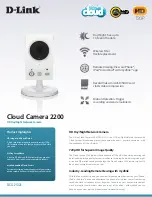
Appendix:
VIDEO CONFERENCE GLOSSARY
CMOS image sensor -
CMOS (abbreviated for
Complementary Metal Oxide Semiconductor
) is similar to CCD
with different silicon process in production. The advantage of
CMOS is low power consumption, low production cost and small in
chipset dice. The cons are lacking of noise immunity, which leads to
less sensitivity in image quality. The modern silicon technology,
however, can improve the signal-to-noise ratio significantly. Major
suppliers of CMOS sensor are: OmniVision, VLSI Vision,
Rockwell, Sharp, HP, Sony, and EleVision with resolution start from
80,000, 250,000 to 1,000,000 pixels.
Digital PC Camera -
Digital PC camera, on t he other
hand, sends the digitized video signal, so-called YUV format,
directly to your PC through parallel port, COM port, USB port, Fast
Ethernet or IEEE 1394 interface. CCIR 601, a digital TV encoding
standard, defines video digitized signal in YUV 4:4:4, or YUV 4:2:2
format. A corresponding driver in PC will decode and translate the
data into correct color for splay. Digital camera is dedicated, but not
limited, for PC applications today. The most popular interface today
are parallel port and USB port.
Image DSP -
Image DSP is used to deal with the image and
color captured and ensure sharpness of color displayed on monitor.
Image DSP can control white balance, hue and saturation of RGB
color, gamma value for color adjustment. Different algorithms are
implemented in DSP to provide such functions. Some silicon
suppliers has already integrate DSP together with image sensor as
one-chip solution for cost-down reason, while others implement
compression engine in image DSP to speed up the data transmission
rate.


































